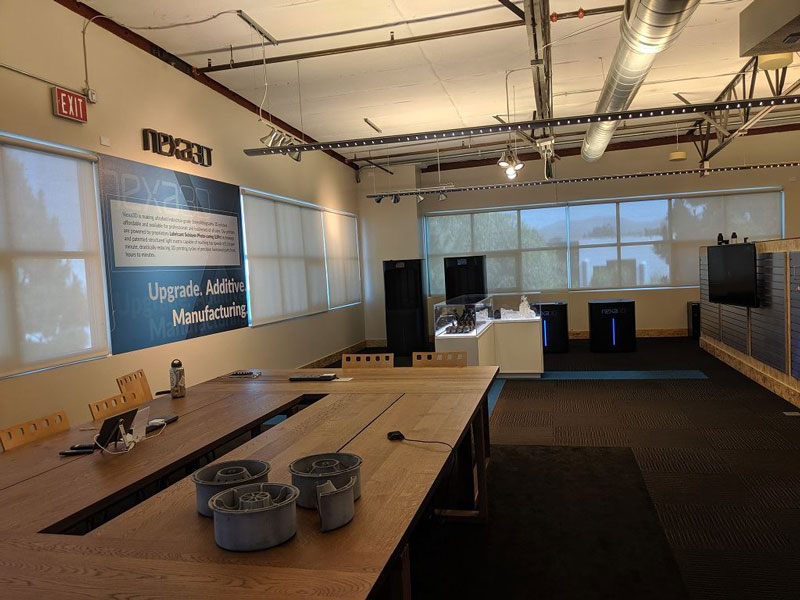Sign up for
XponentialTimes
The latest in exponential technologies, straight to your inbox
Nothing is more exponential than spam. We respect your privacy and never share your personal information.
Nexa3D has been moving full-speed ahead — and with their SLA 3D printers, that’s quite high speed indeed.
During my recent visit to Ventura, California at XponentialWorks, I spent a good amount of time catching up with Nexa3D Chief Product Officer Izhar Medalsy and Executive Chairman and CEO Avi Reichental.
Nexa3D introduced its high-speed NXE 400 ultra-fast SLA production 3D printer at formnext 2018 and announced its market readiness a few months later at RAPID + TCT. Since our last chat at RAPID, Medalsy and Reichental said, the system has gotten even faster. And Nexa3D is keeping up its own pace, readying full production and taking over more of the floor space at the expanding XponentialWorks HQ.
My Ventura visit is already outdated; I was there the first week of July, and a space-in-progress I saw under construction has since opened, allowing some XponentialWorks umbrella teams to move into the snazzy new space as Nexa3D takes over a good deal more of that original square footage. Running out of space is, Reichental laughed, “a recurring theme” at XponentialWorks
He’s not one to sit back and watch, he told me with a smile during one of XponentialWorks’ biweekly happy hours. He needs to be in there, doing. And there’s a lot that needs to be done for the ‘exponential technologies’ the company works with.
The NXE 400 is coming along quite nicely.
Medalsy queued up a print for a full seeing-is-believing speed demo: I watched 111 functional clips be 3D printed using a BASF material in six and a half minutes, which included the machine’s warmup time.
Because it was a demonstration, we interrupted what could have been a smoothly automated print-wash-cure process in which a robotic gantry system automatically removes a tray to take it to the next system. The systems are all built to be the same height, reducing the need for robotic adjustment, maximizing efficiency in a fast-moving production environment. Curing for this tray would be a two-to-three minute process.
Instead, Medalsy brought the tray of fresh clips over for close examination. In comparison to a sample part that had been fully finished, the new hundred-plus looked identical (allowing for that fresh resin sheen and smell).
